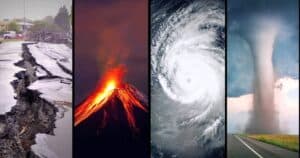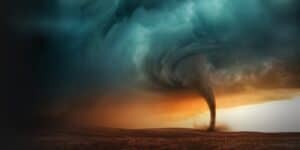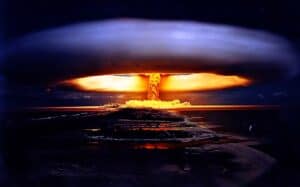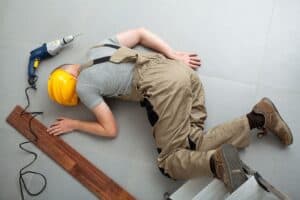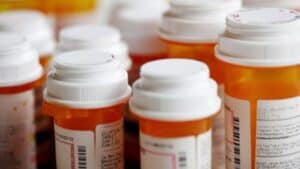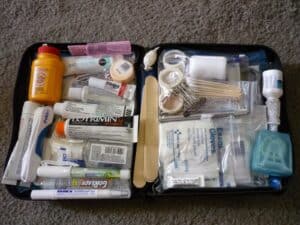It’s the Basic Law of Supply and Demand. When the Demand for Medical Supplies is High, the Supply Runs Low.
The obvious solution to having the appropriate medical supplies on hand when an emergency arises is to stockpile them, but there’s more to it than an assortment of bandages and some over-the-counter medications.
By Steve Nubie
We’re going to explore a condition-driven approach to a stockpile based on the types of medical conditions that are common during and after a disaster. Some will be in short supply very rapidly after disaster strikes. Others are difficult to find in most stores even now.
Many items can be found at a pharmacy, but if they are a bit obscure, the Internet has it.
In the grand scheme of things, the items you choose to stockpile are not very expensive. It’s the quantity and the variety that can add up a bit, but even then, if you can’t find it anywhere, it’s priceless.
The primary focus here is on first aid items that will be in high demand following a disaster. If you think of an item you’ll need that’s not on the list, buy it.
Disaster Possibilities
Disasters tend to fall into two broad categories: Natural and Manmade. The good news (if there is any) is that we’re somewhat accustomed to natural disasters if not simply aware of the threats they present.
Manmade disasters are another story and can range from rampant civil unrest to financial collapse or a catastrophic failure of the grid due to infrastructure compromises and worse. Here are the most common injuries and illnesses across these two categories.
Natural Disasters
Hurricanes, wildfires, tornadoes, tsunamis, earthquakes, volcanoes, epidemics, we’ve seen or heard of them all in the last year and the impact in many cases is devastating. What should come as no surprise is that the primary medical emergencies that emerge following a natural disaster fall in the category of basic first aid for non-life-threatening injuries and conditions in most instances.
Here are some examples of common injuries as a result of a natural disaster:
- Fractures and Sprains
- Burns
- Deep cuts and scrapes
- Eye injuries
- Deep punctures
There are also medicines that will be in short supply to treat many conditions that accompany these types of injuries or as a result of compromised living conditions.
- Infection
- Pain
- Poisoning
If you work backward from the injury or condition, it’s a little easier to assess what will be in short supply and what you should stockpile. How much you need to stock is dependent on your family size and your assessment of how long you think the effects of the disaster will last.
Here’s a checklist as a thought starter.
First Aid Supplies Following Natural Disasters
- Splints
- Assorted Bandages
- Elastic bandages
- Gauze Pads
- Large trauma pads
- Butterfly Bandages
- Eye Pads
- Medical Tape
- Gauze wraps in various widths
- Tourniquet
- Refillable and Instant Ice Packs
- Sutures, suture thread, and forceps
Over-the-Counter Medicines (OTC)
- Aspirin
- Ibuprofen
- Acetaminophen
- Cough and throat relief
- Congestion relief
- Triple antibiotic ointment
- Burn and sting relief ointments, gels and sprays
- Eye drops, rinses, and antibiotic eye ointment
- Ipecac syrup to induce vomiting
- Activated charcoal for poisoning
- Benadryl for allergic reactions
- OTC’s for intestinal distress (dysentery)
Medical Equipment
Diagnosis of medical conditions and the treatment of the current state of an ill or injured person requires some equipment. Consider the following:
- Thermometer
- Blood Pressure Cuff
- Stethoscope
- Sterile surgical gloves
- Cane or crutches
- Neck brace
- Velcro splints for legs, arms, wrists, and ankles
- Eye cup
- Sterile bottle for irrigation of eyes and wounds
- Surgical scissors, forceps, scalpel and hemostat
- Dental Picks
Manmade Disasters
You may not have first-hand experience or even knowledge of some manmade disasters. There are also manmade disasters that fall in the unthinkable category, but if they’re within the realm of possibility…well…they’re possible.
Here are some examples that various parts of the world have experienced at one time or another:
- Civil unrest
- Conventional War
- Nuclear war
- Biological war
- Chemical war
- Civil war
- Economic collapse
- Catastrophic grid failure
- Government Collapse
Your experience with any of these manmade disasters has a lot to do with your country of origin and your age. It’s an unfortunate fact that some generations are going to face disasters on this scale at some point in their life.
The medical emergencies that come with manmade disasters are complex and often serious but represent a set of conditions and injuries you would expect depending on the nature of the disaster:
Injuries
Many of the injuries presented by a natural disaster can and will occur during a manmade disaster. If you’ve stockpiled items for a natural disaster, they’ll do double duty for some of these injuries from a manmade disaster. But there are some potential injuries that are unique to manmade calamities. Many of them are very serious if not critical.
- Bullet wounds
- Radiation poisoning
- Radiation Burns
- Eye damage and blindness
- Chemical burns
- Multiple fractures and sprains
- Deep wounds
- Poisoning
- Severe bacterial infections
- Severe bleeding
Conditions
- Radiation sickness
- High fever and pain
- Severe bronchial and respiratory conditions affecting the throat and lungs
- Blindness due to nuclear flash or chemical warfare
- Infection due to severe burns or deep wounds
- Blood borne pathogens
Supplies
- Trauma kit
- Large packs of “WaterJel” burn gel
- Expanded surgical information and supplies
- Professional level eye care and treatment
Medicines
Many of the OTC medicines for a natural disaster should be on hand but there are some specific OTC’s to consider.
Iodide tablets to prevent radiation damage to the thyroid gland.
Activated charcoal – Very important for treatment of radiation poisoning and chemical poisoning.
Serious burn gels (second and third degree).
Prescription Medicines
This isn’t so easy. Prescription medicines are potent solutions, especially for infections and other bacterial conditions. But you can’t get prescription meds unless you have a condition that requires them.
Here are some solutions to consider:
- Save leftover prescription meds in the event of an emergency. Medical professionals recommend against this, but in an extreme emergency you may be glad you have at least some on hand.
- If you or a family member have a chronic condition that requires prescription meds, ask a doctor for a 90-day prescription. That will at least give you a buffer for the short-term.
- Look into veterinary meds as alternatives. Be very careful and do your homework.
Pre-Packaged Medical Kits
You can save yourself a bit of time by simply buying medical kits with a combination of various supplies, medicines, and equipment pre-packed. The size and quantity of items and prices vary but some include sophisticated supplies and features designed for serious expeditions.
Even if you’re assembling individual items off-the-shelf, you should think about collecting and compartmentalizing them based on specific conditions. If you have an emergency related to severe burns you don’t want to spend 15 minutes tearing through hundreds of non-related medical supplies to find the burn gel. A toolbox or tackle box clearly labeled is a good place to start.
Here are some of the basic kits to think about.
- Expedition First-Aid
- Dental Emergency and Repair Kit
- Burn Kits
- Basic Surgical Kits
- Expedition Surgical Kits
- Puncture and Wound Care Kits
- Eye First Aid Kit
- Ear, Nose, and Throat Kits
- Snake Bite Kit
- Radiation First Aid
Knowledge
Having medical supplies on hand is only a first step. Knowing what to do with them is perhaps more important. You should start by assembling some basic books that can give you specific information and reference for treating a variety of medical conditions.

